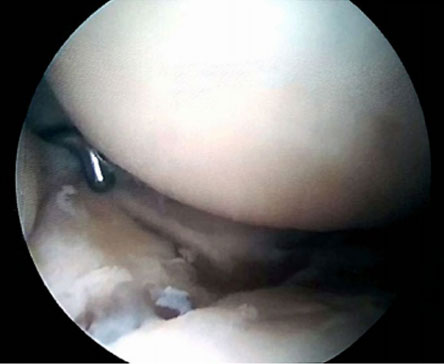Davide Cucchi, Enrico Guerra, Francesco Luceri, Andreas Lenich, Simone Nicoletti, Pietro Randelli, Dieter Christian Wirtz, Denise Eygendaal, Paolo Arrigoni & ESSKA Elbow and Wrist Committee 2016–2018
Received: 22 March 2018 / Accepted: 19 July 2018
© European Society of Sports Traumatology, Knee Surgery, Arthroscopy (ESSKA) 2018
Abstract
Purpose: Arthroscopic fixation of radial head fractures is an alternative to open reduction and internal fixation; the latter, however, presents the advantage of minimal soft-tissue damage. The exposure of the radial head for adequate screw placement can be technically challenging. The aim of this study was to evaluate the inter-observer agreement on the effective contact arc in the axial plane of the radial head of three different elbow arthroscopy portals.
Methods: A fresh-frozen cadaver specimen was obtained and prepared in an arthroscopic setting. Standard anterolateral (AL), anteromedial (AM), and midlateral (ML) portals were established and a circular reference system was marked on the radial head. Ten orthopaedic surgeons were then asked to move the forearm from maximal supination to maximal pronation and indicate with a Kirschner wire from each portal the extension in which they would feel confident in placing a cannulated screw passing through the centre of the articular plane of the radial head (axial contact arc). The Shapiro–Wilk normality test was used to evaluate the normal distribution of the sample. A coefficient of variation (CoV) was calculated to determine agreement among observers.
Results: The average arc of axial contact arc that could be contacted from the AM portal measured 150 ± 14.1°, or 41.7% of the radial head circumference; the one from the AL portal measured 257 ± 29.5°, or 71.4% of the radial head circumference; that from the ML portal measured 212.5 ± 32.6°, or 59.0% of the radial head circumference. Considering all three portals, the whole radial head circumference could be contacted. The AM portal showed the smallest CoV (9.4%) as compared to the AL (11.5%), and the ML (15.3%) portals.
Conclusions: With an appropriate use of the standard AL, AM, and ML portals, the whole radial head circumference can be effectively exposed for adequate fixation of radial head fractures. The contact arc of the AM portal presents the smallest variability among different observers and the AL portal shows a superiority in axial contact arc. This information is important for pre-operative planning, and helps to define the limits of arthroscopic radial head fracture fixation.

